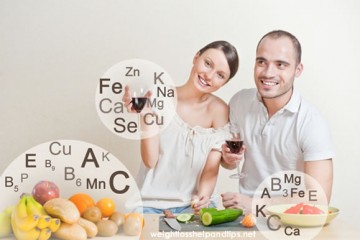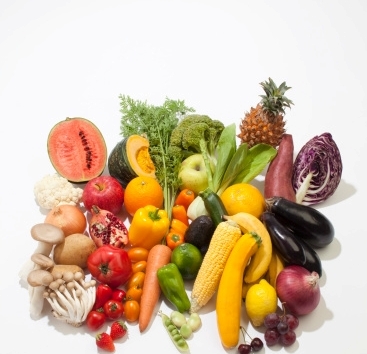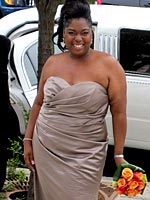What is a well balanced meal?

A well balanced meal should contain all the macro-nutrients required for optimum health and to maintain the cells, tissues and functions of the body. These nutrients include protein, carbohydrate and a regulated amount of healthy unsaturated fat.
Ideally a well balanced meal should also include a variety of vitamins and minerals.
The importance of eating a well-balanced meal
It is important to eat well balanced meals most of the time to ensure that your overall diet is also balanced, and that you are getting all the vitamins and minerals required for a healthy body. Eating healthy, balanced meals will also provide you with plenty of long lasting energy and keep you full for longer.
Obviously it is not always possible to eat a completely nutritionally balanced plate of food at every meal, but if you aim for a balanced the majority of the time, you will end up with a nutritionally complete diet overall.
Try to ensure that each meal contains at least a protein source, carbohydrates and fruit and vegetables. It is not necessary, and in fact would be almost impossible, to consume every nutrient in every meal, so try to look at your diet as a whole over a more long term time frame, and keep your diet varied. Try new foods and look for new recipes and interesting ways of changing your diet.
The USRDA recommend that a balanced meal should be made up of half fruit and vegetables, a quarter with protein and the remaining quarter carbohydrates. A serve of low fat dairy is also recommended. It is also suggested that sodium intake should be reduced, less than 10% of fat intake should be from saturated sources and solid fats should be limited as should refined grains and alcohol.
Protein
Protein is essential in the body, not only to keep us full longer, but also to provide essential amino acids that are used in the body to regenerate protein in the body.
Most Americans eat too much protein, so try to ensure that the protein portion of your meal only occupies about a quarter of your plate at most. A serve of meat for example should be about the size and thickness of a pack of playing cards.
There are two main sources of protein. The first is high quality or complete protein, such as meat, poultry, fish, milk, eggs, and cheese. These contain all the essential amino acids. The second class are the incomplete proteins, which provide adequate amounts of amino acids, but not all of them. These include beans and other legumes, rice, tofu and other vegetarian protein sources.
Due to their incomplete nature, to obtain all the necessary amino acids from non animal sources, it is important to eat a combination of these foods together. For example, beans and rice will provide all amino acids when eaten together, as each is rich in different acids.
It is also important to choose low fat sources of protein. Choose lean cuts of meat and remove any visible fat and chicken skin. Cook using low fat methods such as grilling or baking, or fry in a small amount of olive or vegetable oil.
Carbohydrates
Carbohydrates provide us with the energy our body needs, in addition to important B group vitamins and fibre. Diets that eliminate or drastically reduce carbohydrates may leave you lacking in energy. Rice, pasta, bread, and potatoes are all excellent sources of carbohydrate.
Try to choose wholegrain or brown varieties for increased fibre and longer lasting energy and try to avoid refined carbohydrates sources such as cakes. Low GI carbs such as sweet potatoes are a good alternative to potatoes to keep blood sugar levels more level.
Fats
Although fats are often portrayed as a food to avoid, we do in fact need some fat in our diet. Choose unsaturated fats such as olive oil, vegetables oils and margarines for cooking, or include some healthy fat foods such as avocados and nuts in your diet. These healthy fats help to prevent the build up of cholesterol in the blood and also contribute valuable fat soluble vitamins.
In order to maintain a healthy weight however, we do need to watch our fat intake. Try to cook with minimal added fat, switch to low fat dairy products and stay away from high fat products such as cakes and fried food, particularly if you are watching your weight.
Vitamins and Minerals
Vitamins and minerals play a vital part in the healthy function of our bodies. Different types of foods provide different vitamins, which is why it is essential to eat a variety of different foods. Fruit and vegetables are packed full of vitamins and minerals, and in addition to being low in calories and fat and high in fibre, this makes them a very important part of a healthy diet.
Try to fill half your plate with vegetables at a meal. If this is difficult, eat slightly less vegetables and have a piece of fruit for dessert. Eating more high fibre vegetables is a great way to fill up without loading your body with unwanted calories. It is important to remember however that potatoes, whilst technically vegetables, are really part of the carbohydrate group and should not be part of your vegetable intake for the day.
What does a healthy meal look like?
Here are some balanced meal ideas to help you get started.
Balanced Breakfast Ideas:
- Wholegrain breakfast cereal with low fat milk, fresh fruit and low fat yogurt
- Wholegrain toast with scrambled eggs, low fat cheese, baked beans and fresh fruit salad.
- Porridge oats made with low fat milk topped with bananas, sultanas and a small handful unsalted nuts
- Fruit smoothie with low fat milk, with peanut butter on wholegrain toast.
- See also The importance of breakfast for weight loss
Lunch Ideas
- Wholegrain bread sandwich with a low fat filling such as turkey or tuna, with fresh fruit, green salad and low fat yoghurt.
- Veggie burger (with beans or tofu) on wholegrain bread, with roasted vegetables (minimal oil) and fresh fruit.
- Wholegrain pita pockets stuffed with tuna or hummus, salad and low fat cheese served with pumpkin soup made with low fat milk.
- See also Diet Friendly Frozen meals
Balanced Dinner Ideas
- Oven baked fish with roasted vegetables and potatoes, low fat yogurt garlic sauce and fresh fruit.
- Bean and vegetable stew with brown rice and low fat frozen yogurt
- Whole wheat pasta with tomato based sauce, tuna and roasted vegetables, topped with parmesan cheese, with fresh fruit and low fat dairy dessert.
- See also: 13 healthy snack ideas for weight loss
-
Low Carb Dieting Tips: When You Reach Your Plateaus
Low Carb Diet is always the correct way
-
Nutrition and Eating: Friends for Life
Nutritional Needs I’ll bet that you’ve n
-
Baby Food Diet
Baby food diet is the latest terminology for describing the tiny sized
-
Why bistroMD May be the Right Diet Plan for you
Why bistroMD May be the Right Diet Plan for you
-
Healthy Diet – Choosing low fat high fiber foods
Healthy diet is the only way to have a h
-
5 Diet Rules for Beginners to Lose Weight Fast
The decision to lose weight is easy to make, but it is not alwa
- DON'T MISS
- Detox Diets for Weight Loss
- How Enjoyable Is Your Dinner?
- How to Stock a Slimming Kitchen
- Diet Meal Plans: Which One is Right for You?
- Achieve A Good Figure By Using Weight Loss Pills
- What are liquid diets and do they work for weight loss?
- Why you should avoid very low calorie diets?
- The Best 7 Foods For a Flat Belly
- Lose 8 Pounds in 2 Weeks
- Fat Burning Foods




